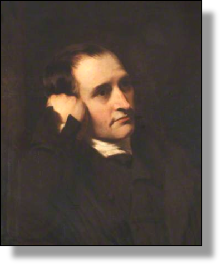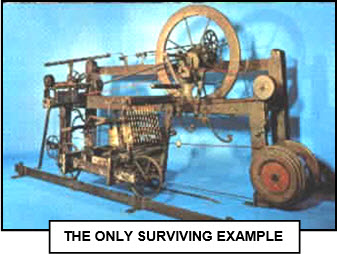


SAMUEL CROMPTON 1753 -
xxxxxSamuel Crompton, another inventor from Lancashire, came up with his "spinning mule" in 1779. A combination of the good ideas put forward earlier by James Hargreaves and Richard Arkwright, it not only increased output, but also produced a very fine quality yarn, opening up a new market in cotton textiles. Too poor to afford a patent, he made little out of his invention, but it put spinning on a mass-
 xxxxxSamuel Crompton, who lived near Bolton in the north-
xxxxxSamuel Crompton, who lived near Bolton in the north-
xxxxxCrompton developed the "spinning mule" for use in his own home, but, in fact, it was destined to put spinning on a mass- strength and fineness of the thread and yarn it produced opened up a new, specialised market in high quality cotton textiles. Being too poor to patent his invention, he let his ideas be known to a number of local manufacturers on promise of payment, but most of them never paid him. It was not until 1812, in fact, when over 4,000 of his mules were in use, that Parliament gave him a grant of £5,000. By that time, as we shall see, spinning had long ceased to be a domestic industry, and was firmly established in those "dark, satanic mills" of northern England.
strength and fineness of the thread and yarn it produced opened up a new, specialised market in high quality cotton textiles. Being too poor to patent his invention, he let his ideas be known to a number of local manufacturers on promise of payment, but most of them never paid him. It was not until 1812, in fact, when over 4,000 of his mules were in use, that Parliament gave him a grant of £5,000. By that time, as we shall see, spinning had long ceased to be a domestic industry, and was firmly established in those "dark, satanic mills" of northern England.
Acknowledgements
Crompton: mezzotint after the British artist Charles Allingham (1788-
G3a-


